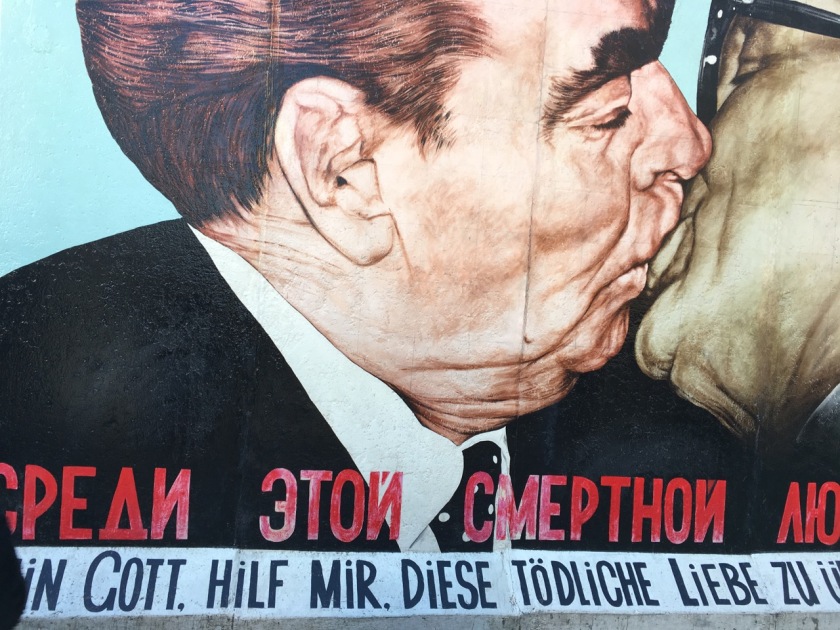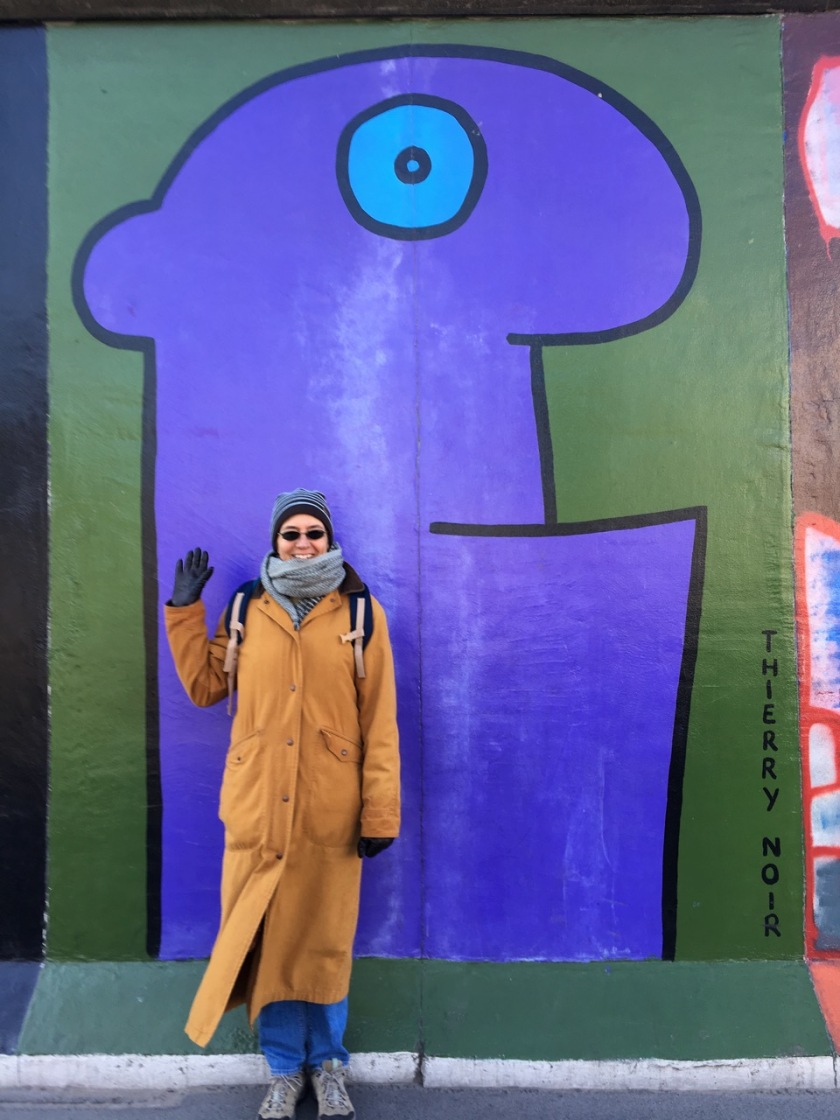It’s been quite chilly in Berlin for Las Chicas, with temps dipping into the minus zero Celsius region. Despite the cold, the sun shines and so we take advantage and explore some of Berlin’s history.
On Saturday we walk in the Grünewald (green forest). While enjoying the non-city feel of the forest, we are reminded of the city’s past with Teufelsberg (Devil’s Mountain) in the background. This tower was part of the American and British “listening station” during the cold war.

On Sunday we head to Friedrichshain to see the Oberbaum bridge, a long-awaited field trip. The Oberbaum Bridge was one of the eight checkpoints in the city when East and West Berlin were divided by the Wall. (For those interested in more of the history of Oberbaumbrücke )
On our path from the train to the bridge we cross places where portions of the Berlin Wall once stood.
Originally constructed in 1874, the Oberbaum Bridge stands majestically across the Spree River, a natural divider between the East and West, in the past. Along with its historical significance, the bridge became a little more famous in the 1990s German thriller, Run Lola Run. We are intrigued by the bridge that comes across our radar from time to time, most recently while watching the series Berlin Station on Netflix.
On the east side of the Spree River is the East Gallery, a wall covered with paintings dating back to 1990. The wall was originally constructed to celebrate the demolition of the Berlin Wall and the reunification of Berlin. Today we shift into proper tourist mode and weave in and out of tour groups to snap photos of some of the more memorable murals.
Graffiti alters more than a few of the murals. In 2009 there was a major restoration done to refresh and repaint a number of the murals that had been ruined or distorted by the volumes of graffiti over the years.
Some of the murals are quite well known,
“Detour to the Japanese Sector,” originally set in front of one of the GDR watch towers, now stands alone.

This throwback to the GDR shows the Traubant car.

The depiction of a mass of people being squeezed through the wall, representing the opening of East Berlin on 9 November 1989.

And perhaps the most famous painting showing the Soviet and GDR leaders, Breshnev and Honecker kissing, based on an actual photo from Breshnev’s 1979 visit to Berlin. The kiss was an expression of support between socialist countries of that era.
We also enjoyed the different views inside and beyond the bridge.




Molecule Man, in the distance, is a series of aluminum sculptures, designed by American artist Jonathan Borofsky, one in Berlin, Germany and one in Iowa, United States.


© Lisa Howells and Mary Reynolds, 2018
















